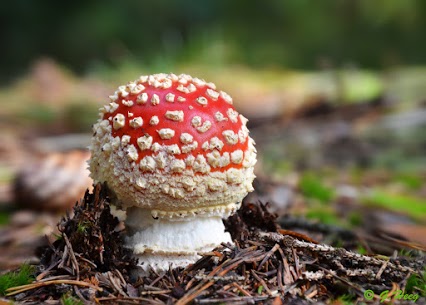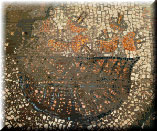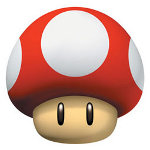 “One pill makes you larger, And one pill makes you small, And the ones that mother gives you, Don't do anything at all, Go ask Alice, when she's ten feet tall. And if you go chasing rabbits, And you know you're going to fall, Tell 'em a hookah smoking caterpillar, Has given you the call, Call Alice, when she was just small.” – Grace Slick, The Great Society.
“One pill makes you larger, And one pill makes you small, And the ones that mother gives you, Don't do anything at all, Go ask Alice, when she's ten feet tall. And if you go chasing rabbits, And you know you're going to fall, Tell 'em a hookah smoking caterpillar, Has given you the call, Call Alice, when she was just small.” – Grace Slick, The Great Society.
Seems Alice’s adventures with proportion we’re the results of ingesting Amanita muscaria, yesterdays featured fungus for Google + "Shoorm Staurday”. It is likely one of the most well known yet unrecognized fungus in the world. Mainly noted for being hallucinogenic, a primary result of ingesting this fungus is in distorting the size of perceived objects. This observation is thought to have formed the basis of the effects of eating the mushroom in the 1865 popular story Alice's Adventures in Wonderland.
The mushroom is commonly known as “fly agaric” or “fly amanita” and can be found in conifer and pine forests in North America, The Mediterranean and Central and South America. Amanita muscaria cannot be commercially cultivated, due to its mycorrhizal relationship with the roots of pine trees. While it is considered poisonous there are few cases of death associated with ingesting it, and in many regions it is eaten as a food in parts of Europe, Asia, and North America after being parboiled (this process removes the mushroom's psychoactive substances).
The history of the mushroom being used as an hallucinogenic be traced back to 1700–1100 BC and and The Rig Veda texts of India where is may have been the active ingredient in Soma. Dead Sea Scrolls scholar John Allegro has proposed that early Christianity sprang form cultic use of the fungus in Second Temple Judaism.
Franco Fabbro, author of "Mushrooms and Snails in Religious Rituals of Early Christians at Aquileia" documents the depiction of Amanita muscaria, in the art of the Christian Basilica of Aquileia in northern Italy. The section of the mosaic floor which displays these mushrooms is found in the oratory of the northern hall, which is the oldest part of the basilica, dating to before 330 AD. An epigraph in the floor itself claims that the oratory was used for religious ceremonies.
Another bowl containing snails, probably of the variety Helix cincta. a favored edible species, is found adjacent to the mushrooms. Fabbro hypothesizes that the snails and mushrooms were eaten together. It is possible, however, that snails were allowed to feed on the mushrooms, and then the snails were consumed. This preparation may have effectively reduced or eliminated the undesirable physiological effects of consuming the mushrooms directly. This is more likely than it might sound initially; not only were the Romans well known for snail breeding, but they recognized that what the snails fed upon had a determining effect upon their flavor.
From the mist of time to the present day Amanita muscari has played an important role in man's development. Surprisingly, or not the Nintendo video game “Super Mario” features the mushroom. “Power-up”, and Super Mario might say.
Sources: entheomedia.org wikipedia.com



